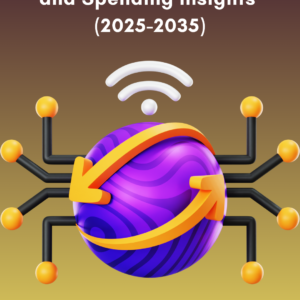1. Introduction to Semiconductor CapEx
- Overview of CapEx in the semiconductor industry
- Importance of CapEx for growth and innovation
- Key areas where CapEx is focused
2. Facilities and Fabrication Plants (Fabs)
- New Fab Construction: The costs associated with building new semiconductor fabs. This can include the cost of land, construction, clean rooms, and related infrastructure.
- Typical spend: $3B – $10B+ per fab, depending on technology node.
- Fab Upgrades: Investing in existing fabs to upgrade to more advanced nodes (e.g., from 5nm to 3nm).
- Typical spend: $1B – $5B+ per upgrade cycle.
3. Manufacturing Equipment
- Lithography Equipment: One of the largest CapEx investments, particularly for extreme ultraviolet (EUV) lithography machines.
- Example: ASML’s EUV machines can cost over $150M per unit.
- Etching, Deposition, and Metrology Tools: Other critical equipment for semiconductor manufacturing.
- Costs vary widely, from $5M to $100M per tool depending on complexity.
- Testing and Packaging Equipment: Equipment used for wafer testing, final product testing, and advanced packaging (e.g., 2.5D, 3D IC packaging).
- Example: Testing equipment can cost between $10M and $30M per setup.
4. Research & Development (R&D)
- Advanced Node Development: Significant investment into R&D to shrink nodes (e.g., from 7nm to 5nm) and develop new manufacturing techniques (FinFET to GAA).
- R&D expenditure can make up 15-25% of semiconductor CapEx budgets.
- Emerging Technologies: Investment in technologies like quantum computing, AI chips, 3D stacking, and chiplet architectures.
- Example: Intel’s R&D spend is often above $15B annually.
5. Supply Chain and Materials
- Raw Materials Procurement: Spending on specialized materials such as silicon wafers, photoresists, and gases like argon or neon.
- Costs can vary depending on market conditions but typically account for 10-15% of CapEx.
- Supply Chain Infrastructure: Investments in warehousing, logistics, and raw material storage to ensure smooth operations.
6. Software and IT Infrastructure
- EDA Tools (Electronic Design Automation): Investments in software for chip design and verification.
-
- Major vendors: Cadence, Synopsys, Mentor Graphics.
- Costs: License fees for top-tier EDA tools can be millions of dollars annually.
-
- Cloud and HPC Infrastructure: Investments in cloud services, high-performance computing (HPC), and AI/ML platforms to support R&D and simulation workloads.
7. Sustainability and Green CapEx
- Energy Efficiency Upgrades: Reducing energy consumption through green technology in fabs (solar energy, efficient HVAC systems, etc.).
- Waste Reduction Initiatives: CapEx related to reducing chemical waste, recycling, and water usage (fabs are significant water consumers).
- Green initiatives are expected to make up an increasing portion of CapEx, around 5-10% for environmentally-conscious semiconductor firms.
8. Advanced Packaging and Interconnects
- 2.5D/3D Packaging: Investments in advanced packaging technologies to improve performance and reduce form factor.
- Packaging CapEx can account for 5-15% of total spending, especially for advanced chip designs.
- Interconnect Technologies: High-speed interconnects such as silicon photonics and through-silicon vias (TSVs).
- Costs are variable but growing as chip complexity increases.
9. Geographic Considerations
- Regional Expansion: Semiconductor companies are diversifying their fab locations to reduce geopolitical risk (e.g., building fabs in the US and EU).
- Government Incentives: Influence of government subsidies and incentives (e.g., CHIPS Act in the US) on CapEx allocation.
10. Future Trends in Semiconductor CapEx (2025-2035)
- Projected increases in CapEx for AI-specific and quantum computing fabs.
- Rise of automotive semiconductor fabs as demand for electric vehicles (EVs) grows.
- The impact of global supply chain disruptions on capital allocation strategies.
- Integration of 5G infrastructure and the IoT driving semiconductor investments.







